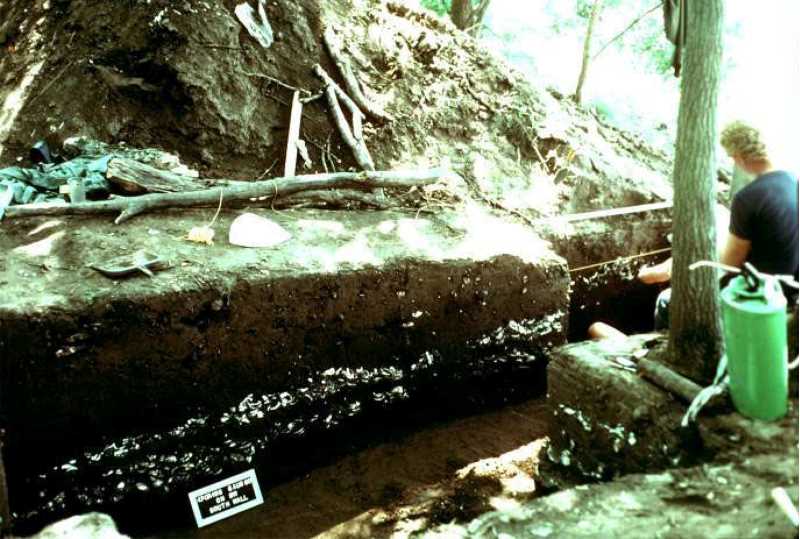Glossary
Stratigraphy
 Stratigraphy
Stratigraphy
Stratigraphy is a type of "relative dating" that helps archaeologists interpret the relative ages of cultural deposits or artifacts found in the same site. At most sites, the deposits build up over time. Accumulation of newer deposits over older ones creates a pattern called "superposition," in which younger things are found above older things.
Archaeologists excavating a site look for these soil layers, or strata, and record this "stratigraphy." Unless there has been disturbance, we can assume that soils and artifacts in the upper layers are younger than those in the lower levels. Excavating sites in layers, and keeping the artifacts from different layers separate, allows us to see changes through time.
This photo is from the Mill Pond site, found on an island in the Mississippi River near Prairie du Chien, WI. It was taken in 1980, during excavations by MVAC Research Associates Dr. James Theler and Dr. Connie Arzigian, then of UW-Madison. The two white bands are Woodland-era shell middens. Radiocarbon dating was used to date the lower layer to about AD 100, and the upper one dates to about AD 500.

